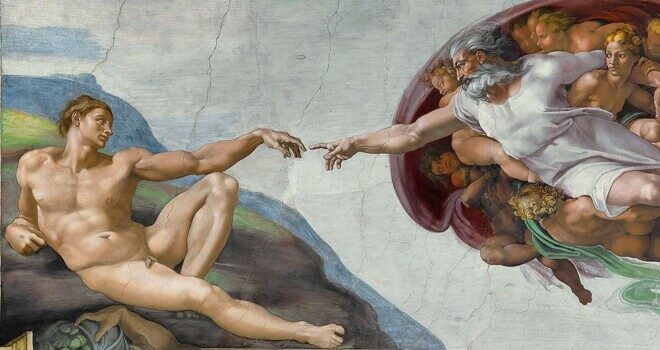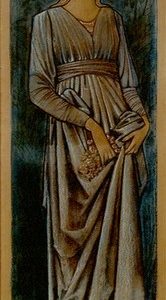Pope Saint John Paul II devoted Wednesday audiences, beginning in September 1979 and culminating in November 1984, to a series of talks collectively referred to as the Theology of the Body. George Weigel, author of Witness to Hope, his superb biography of the Pontiff, has expressed his belief that these 130 catechetical addresses “constitute a kind of theological time bomb set to go off, with dramatic consequences, sometime in the third millennium of the Church.”
Weigel’s prediction has yet to be realized, though we may take some consolation in the fact that the third millennium is still young. At the same time, what John Paul had to say in these addresses is more relevant to the present world than it was when it was first delivered.
St. Thomas Aquinas once remarked that he made prudent use of his study time by being taught from two sources that cannot lie: scripture and nature. In the contemporary world, both these time-honored and reliable sources have been replaced by the ephemeral and unreliable sources of politics and ideology. The Theology of the Body is solidly anchored in scripture and in a careful examination of the nature of the human being as a person.
In today’s moral climate, sex and marriage have been severed from their historical roots in scripture and in nature. Same-sex marriage, sex changes, radical individualism, and a concerted attempt to undermine the traditional family of one mother and one father have proven to be contentious and have contributed to a great deal of personal confusion.
If there is one sentence which was articulated by JPII that speaks to the essence of the Theology of the Body, it is the following:
The body, and it alone, is capable of making visible what is invisible: the spiritual and the divine. It was created to transfer into the visible reality of the world the mystery hidden since time immemorial in God, and thus be a sign of truth.
As the result of omitting any relation to God, rejecting the aims of nature, and reducing man to a self-absorbed individual, sex becomes something to be manipulated, while marriage seems outdated.
JPII, again and again, returns to the “solitude” of Adam. The implication here is that being alone is not fulfilling. Aloneness is a state of incompleteness. In the present world, loneliness is pandemic. In order to be relieved of this unhappy condition, people often worsen their situation by resorting to drugs, suicide, and other counterproductive strategies. The aloneness of Adam gives him a strong sense of his need for a partner. His solitude is remedied by the appearance of Eve, who calls forth his love. The two are equal in humanity, though complementary in mission. Together they enter into marriage which produces a family. Adam and Eve are the prototypes of the married couple. Both realize their larger and more complete self through love and dedication.
Pope John Paul II is not in the least naïve. He explains how the first parents’ rejection of their finitude and choice to be god caused their banishment from Eden. Their Original Sin, thus, caused them to fall from grace and struggle to recapture the original love they had for each other. We are wounded creatures and should not settle for our wounded state but to aspire to the state that God intended us to enjoy. Therefore, we should not despair of life’s vexations, but choose the path, difficult as it may be, to return to God. The Theology of the Body explains that our broken state is not the normal one.
Sex is far more meaningful and powerful than most people realize. It is a great gift and therefore requires our full responsibility for its proper use. The body is not something that can be reduced to the material. Through the body, another world shines through. This world is one in which God expresses His love for us.
Sex, therefore, is expressed not only between man and woman, but also between man and God. “The human body,” John Paul notes, “oriented interiorly by the sincere gift of the person, reveals not only its masculinity or femininity on the physical plane, but reveals also such a value and such a beauty as to go beyond the purely physical dimension of sexuality.”
Men and women are embodied creatures who fulfill themselves through generous love. They are meant to be complementary not confrontational. Disharmony between the sexes occurs when individual men and women view each other as threats or limitations to their individuality.
John Paul returns the discussion of the differences between the sexes to its authoritative basis, which is Genesis. “Have you not read,” Christ asks the Pharisees, “that the Creator from the beginning made them male and female?” (Matthew 19:4). He uses this basis as a primary text in making four essential points:
That masculinity and femininity are constituent of the human person.That the human body has a nuptial significance and is created by God with the loving union of man and woman in mind. That man and woman enter upon this union freely and offer themselves to each other as mutual gifts. That sin can subvert the authentic relationship of the sexes, which was intended to be a gift, reducing it to a form of exploitation or dominance.
The Theology of the Body offers us understanding and hope. The remedy for our problems in the areas of sex and marriage are available. We simply need to make use of them.
Editor’s Note: For more on Pope Saint John Paul II’s lectures on the Theology of the Body, read Man and Woman He Created Them: A Theology of the Body.
Michelangelo. (1511). The Creation of Adam [painting]. Retrieved from Wikimedia Commons.










